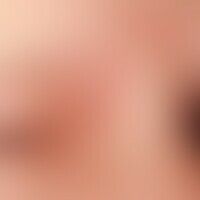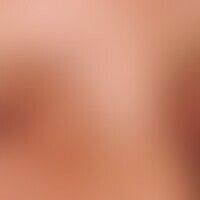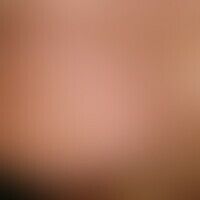Swivel flap plastic surgery, centrofacial Images
Go to article Swivel flap plastic surgery, centrofacial
Centrofacial valve surgery, centrofacial. Fig. 1 a: Central erosive tumor raised above the skin level with a circularly raised rim, glabellanah in the medial orbital region in a 67-year-old woman. Histology of a sample excision from the tumor revealed a solid ulcerated basal cell carcinoma. Planning of a pivotal valve surgery from the glabella.

Fig. 1 b: Postoperative suturing after covering the round excision defect with a swivel flap from the glabella.

Fig. 1 c: Progress documentation: skin condition 3 years after surgery.

Swing valve plastic surgery, centrofacial. fig. 2 a: nodular tumor, slightly deepened in the center, with hemorrhagic crust in the area of the lateral lower lid in a 75-year-old man. a tissue sample showed the histological diagnosis of a basal cell carcinoma. planning of a swing valve plastic surgery of the upper lid.

Fig. 2 b: Postoperative suture conditions after defect coverage with a swivel flap from the upper eyelid.

Swing valve plastic surgery, centrofacial. fig. 3 a: Nodular tumor on the nasal wing in a 64-year-old woman, interspersed with telangiectasia. Histological diagnosis: solid basal cell carcinoma. planning of a swing valve plastic surgery from the nasolabial fold.

Fig. 3 b: Progress documentation: skin condition 5 years after surgery.

Swing valve plastic surgery, centrofacial. Fig. 4 a: Tumour on the chin of a 77-year-old woman covered with a haemorrhagic crust and forming an edge wall. Histological diagnosis: ulcerated basal cell carcinoma.

Swing flap plastic surgery, centrofacial. Fig. 4 b: Postoperative suture conditions.

Fig. 4 c: Skin condition 3 years after defect coverage with swivel flaps from the lateral mental region.